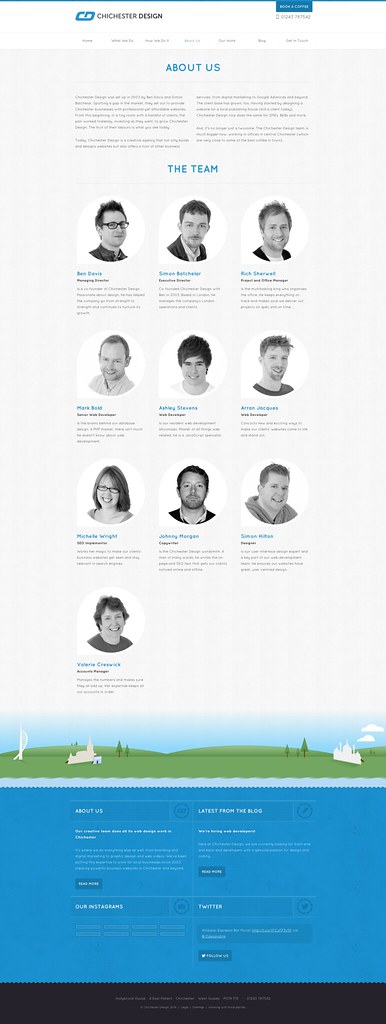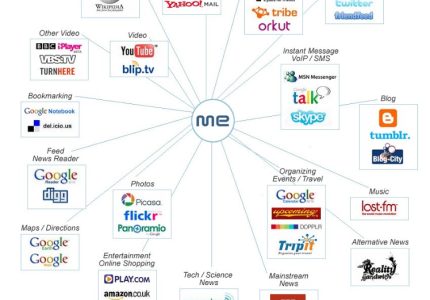Understanding the Importance of Business Website Design
Business website design plays a crucial role in establishing a strong online presence and attracting potential customers. A well-designed website not only reflects the professionalism and credibility of a business but also enhances user experience and engagement. Understanding the importance of effective website design can help businesses stand out in a competitive digital landscape and drive growth and success.
Enhancing Brand Credibility
Effective business website design plays a crucial role in establishing and enhancing a company’s brand credibility. A professionally designed website creates a positive first impression, conveying trustworthiness and reliability to visitors. When a website is visually appealing, easy to navigate, and well-organized, it reflects the company’s commitment to quality and attention to detail. This instills confidence in potential customers, encouraging them to engage with the brand and make purchasing decisions.
Moreover, a well-crafted website serves as a powerful communication tool, clearly presenting the company’s values, products, and services. Consistent branding elements such as logos, color schemes, and typography reinforce brand recognition and demonstrate professionalism. In the digital age, a business website often acts as the primary platform for customer interaction; therefore, investing in thoughtful design enhances overall brand image, fosters customer loyalty, and positions the business as a credible authority in its industry.
Improving User Experience
Understanding the importance of business website design is crucial for establishing a strong online presence and attracting potential customers. A well-designed website not only reflects the professionalism of a business but also builds trust and credibility with visitors. By creating an attractive and organized layout, businesses can effectively communicate their brand values and offerings.
Improving user experience is a key component of effective website design. A seamless and intuitive interface allows visitors to navigate easily, find information quickly, and engage with the content without frustration. Factors such as fast loading times, mobile responsiveness, clear call-to-actions, and straightforward menus contribute significantly to retaining visitors and encouraging conversions. Prioritizing user experience ultimately leads to increased engagement, customer satisfaction, and long-term success for the business.
Increasing Conversion Rates
Business website design plays a crucial role in establishing an online presence and attracting potential customers. A well-designed website not only catches visitors’ attention but also provides an intuitive and engaging experience that encourages them to take desired actions, ultimately increasing conversion rates.
Effective website design enhances user experience by ensuring that navigation is simple and information is easily accessible. Clear calls-to-action guide visitors toward making purchases, signing up for newsletters, or contacting the business. Visual appeal, combined with functionality, helps build trust and credibility with prospective customers.

- First impressions matter: A professional and modern design can immediately convey reliability and expertise.
- Mobile responsiveness ensures accessibility across all devices, expanding the potential customer base.
- Optimized loading speeds prevent visitor frustration and reduce bounce rates.
- Consistent branding across your website builds recognition and reinforces your business identity.
- Strategic placement of content and calls-to-action directs user flow, leading to higher conversion rates.
Key Elements of Effective Business Website Design
Creating an effective business website involves carefully integrating several key elements that enhance user experience and achieve business goals. A well-designed website should be visually appealing, easy to navigate, and optimized for performance. Clear call-to-actions, responsive design, and high-quality content are also essential to attract and retain visitors, ultimately driving conversions and establishing a strong online presence.
Responsive and Mobile-Friendly Layout
Effective business website design depends on several key elements that enhance user experience and support business objectives. One of the most important aspects is a responsive and mobile-friendly layout, which ensures the website functions seamlessly across all devices and screen sizes. A responsive design adapts content layout dynamically, providing easy navigation and readability whether viewed on a desktop, tablet, or smartphone. This flexibility not only improves user engagement but also contributes to better search engine rankings. Additionally, an effective business website should have a clean and organized structure, clear calls to action, fast load times, and consistent branding to create a professional and trustworthy online presence. Incorporating these elements results in a website that attracts visitors, encourages interaction, and drives conversions.
Clear Navigation Structure
A clear navigation structure is a fundamental element of effective business website design, ensuring visitors can easily find the information they need and enhancing their overall experience. A well-organized menu system should be simple, intuitive, and accessible from every page, typically placed at the top or side of the site for consistency. Clear labels for each menu item help users understand where they will be directed, reducing confusion and frustration. Additionally, employing a logical hierarchy with dropdowns or submenus allows for a clean presentation of content, preventing clutter on main pages. Incorporating features like a search bar further improves navigation, allowing users to locate specific information quickly. Overall, a clear navigation structure guides visitors seamlessly through the website, encouraging engagement and promoting a positive perception of the business.
Consistent Branding and Visual Identity
Effective business website design is essential for establishing a strong online presence and building trust with visitors. Key elements include a clean and user-friendly layout that makes navigation intuitive, quick loading times to enhance user experience, and mobile responsiveness to accommodate visitors on various devices. Incorporating clear calls-to-action guides users towards desired interactions, whether it’s making a purchase or contacting the business. Additionally, high-quality visuals and concise content help communicate the brand’s message effectively.
Consistent branding and visual identity are vital components of a successful business website. They ensure that all visual elements—such as logos, color schemes, typography, and imagery—align with the overall brand personality. Maintaining uniformity across the website fosters brand recognition and reinforces credibility. Consistent branding also involves coherent messaging styles and tone of voice, which help create a memorable and trustworthy impression. Together, these elements help convey professionalism and establish a cohesive identity that resonates with the target audience.
Fast Loading Speeds
Effective business website design is essential for attracting visitors, engaging users, and converting them into customers. One of the key elements is fast loading speeds, which enhance user experience and improve search engine rankings.
- Clear and Intuitive Navigation: Making it easy for visitors to find information quickly.
- Responsive Design: Ensuring the website adapts seamlessly to various devices and screen sizes.
- Visual Appeal: Using professional visuals, consistent color schemes, and clean layouts to create trust and interest.
- High-Quality Content: Providing relevant and compelling content that communicates your value proposition.
- Fast Loading Speeds: Optimizing images, leveraging browser caching, and minimizing code to reduce load times.
- Strong Calls-to-Action: Guiding visitors toward desired actions with clear and persuasive prompts.
- SEO Optimization: Incorporating keywords and best practices to improve search engine visibility.
- Security Features: Implementing SSL certificates and secure payment options to build user trust.
Accessible and Inclusive Design
Effective business website design is essential for creating a positive user experience and achieving business goals. Key elements include a clear and intuitive layout, responsive design that adapts to various devices, fast load times, and visually appealing aesthetics that align with brand identity. Utilizing straightforward navigation helps visitors find information easily, while high-quality content keeps them engaged. Incorporating calls-to-action guides users towards desired actions, such as making a purchase or contacting the business.
Accessible and inclusive design ensures that all users, regardless of their abilities or disabilities, can access and benefit from the website. This involves using proper contrast ratios for readability, providing alt text for images, and ensuring keyboard navigation is possible. Designing with universal usability in mind also includes considering language simplicity, avoiding overly complex layouts, and ensuring compatibility with assistive technologies. By prioritizing accessibility and inclusivity, businesses can reach a broader audience and demonstrate a commitment to social responsibility, ultimately enhancing their reputation and user satisfaction.
Design Best Practices for Business Websites
Creating an effective business website requires thoughtful design that balances aesthetics, functionality, and user experience. Implementing best practices ensures that visitors can easily navigate the site, find relevant information, and engage with your brand. A well-designed website not only attracts potential customers but also builds credibility and drives business growth.
Minimalist and Focused Design
Implementing minimalist and focused design principles is essential for creating effective business websites. A clean layout with ample white space helps visitors easily navigate and locate key information without feeling overwhelmed. Prioritize clear typography and a limited color palette to enhance readability and brand consistency. Avoid clutter by only featuring essential elements such as a concise value proposition, clear call-to-actions, and straightforward navigation menus. Use visual hierarchy to guide users naturally through the site, emphasizing the most important content. Ensuring fast loading speeds and mobile responsiveness further enhances user experience. Overall, a focused and minimalist design communicates professionalism and builds trust with visitors, ultimately supporting business goals.
Use of High-Quality Images and Graphics
Designing a business website requires careful attention to visual elements to create a professional and engaging user experience. Utilizing high-quality images and graphics significantly enhances the website’s aesthetic appeal and credibility, helping to attract and retain visitors. Clean, crisp visuals communicate trustworthiness and demonstrate a commitment to quality, which can positively influence customer perception.
- Choose images that are relevant to your brand and resonate with your target audience.
- Ensure all graphics are high-resolution to maintain clarity and professionalism across devices.
- Optimize images for fast loading times without compromising quality to improve user experience and SEO ranking.
- Use consistent style and color schemes to create a cohesive visual identity.
- Incorporate custom graphics or illustrations to differentiate your brand and convey unique value propositions.
- Avoid cluttering pages with excessive visuals; instead, use them strategically to highlight key messages or calls to action.
- Regularly update visuals to reflect current branding, products, or services, keeping the website fresh and relevant.
Strategic Call-to-Action Placement
Effective design practices for business websites emphasize clarity, usability, and strategic placement of key elements to engage visitors and drive conversions. A clean layout with intuitive navigation helps users find information quickly and encourages them to stay longer on the site. Incorporating a consistent color scheme and professional visuals reinforces brand identity and builds trust with visitors.
Strategic placement of call-to-action buttons is crucial for guiding visitors toward desired actions such as making a purchase, signing up for a newsletter, or requesting more information. Key CTAs should be prominently displayed above the fold, ensuring they are immediately visible without scrolling. Repeating important CTAs throughout the website, especially at logical stopping points like the end of sections or pages, helps increase engagement.
Using contrasting colors for call-to-action buttons makes them stand out and easily recognizable. Clear, concise, and action-oriented language on these buttons encourages clicks. Additionally, ensuring that CTAs are relevant to the content around them maximizes their effectiveness. Testing different placements and designs can uncover what resonates best with the target audience, ultimately enhancing the website’s performance and achieving business goals.
Legible Typography
Effective business website design hinges on the strategic use of legible typography to enhance user experience and communicate professionalism. Choosing clear and simple fonts ensures visitors can easily read and navigate the content without strain or confusion. It is advisable to prioritize high contrast between text and background, such as dark text on a light background, to maximize readability across different devices and lighting conditions. Maintaining consistent typography styles, including font size, weight, and spacing, helps establish a cohesive visual hierarchy that guides users naturally through the information. Additionally, limiting the number of font types and sizes prevents clutter and maintains a clean, organized appearance. Proper line spacing and paragraph structure further contribute to legibility, making content accessible and inviting to all visitors. Ultimately, thoughtful typography choices reinforce brand credibility and foster positive engagement on the website.
Effective Use of Color Schemes
Design best practices for business websites focus on creating an engaging, user-friendly experience that reinforces the brand and drives conversions. Effective use of color schemes plays a vital role in achieving these goals by influencing user emotions and guiding behavior.
- Choose a Color Palette That Reflects Your Brand Identity: Select colors that align with your brand personality to ensure consistency and strengthen brand recognition.
- Utilize Contrast for Readability: Use contrasting colors for text and backgrounds to improve readability and ensure important elements stand out.
- Limit the Number of Colors: Keep the color scheme simple with a primary palette and a few accent colors to avoid visual clutter and maintain a professional appearance.
- Apply Color Psychology: Understand the emotional impact of colors—blue for trust, green for growth, red for urgency—to influence user perception and actions.
- Use Consistent Color Coding for Calls to Action: Highlight buttons and links with consistent colors to guide users smoothly through desired actions.
- Test Color Variations: Conduct user testing to evaluate how different color schemes affect engagement and adjust accordingly for optimal results.
Choosing the Right Website Design Tools and Platforms
Choosing the right website design tools and platforms is a crucial step in creating a successful online presence for your business. The right tools can streamline the design process, enhance functionality, and ensure your website aligns with your brand identity. With a variety of options available, understanding the features and benefits of each platform can help you make an informed decision that supports your business goals and provides a seamless experience for your visitors.
Content Management Systems (CMS)
Choosing the right website design tools and platforms is essential for creating an effective business website that is visually appealing, easy to navigate, and capable of supporting your company’s growth. A suitable Content Management System (CMS) streamlines the process of managing content, updating your site, and integrating new features without requiring extensive technical knowledge.
When selecting a CMS for your business website, consider the following factors:
- Ease of Use: Ensure the platform has an intuitive interface suitable for your team’s skill level.
- Customization Options: Look for customizable templates and plugins to tailor your site to your brand.
- Scalability: Choose a platform that can grow with your business and handle increased traffic.
- SEO Features: Select a CMS with built-in SEO tools to improve your search engine rankings.
- Security: Prioritize platforms with strong security measures and regular updates.
- Support and Community: Opt for systems with active user communities and reliable customer support.
Popular business website design platforms include WordPress, Shopify, Wix, and Joomla, each offering different advantages based on your specific needs. WordPress is highly flexible and customizable, ideal for content-heavy sites. Shopify specializes in e-commerce solutions, perfect for online stores. Wix provides user-friendly drag-and-drop tools for quickly building attractive sites, while Joomla offers advanced features for more complex projects. Carefully evaluate your business requirements, technical skills, and budget to select the best tools and platforms for your website.
Website Builders
Choosing the right website design tools and platforms is essential for creating an effective business website that attracts and retains visitors. The right platform should align with your business needs, technical skills, and budget constraints, ensuring a smooth design process and a professional final product. Popular website builders like Wix, Squarespace, and Shopify offer user-friendly interfaces with customizable templates suitable for various industries, making it easier for non-technical users to build a functional site.
For more advanced needs, platforms like WordPress provide extensive flexibility through numerous themes and plugins, allowing for customized features and scalability as your business grows. When selecting a tool, consider factors such as ease of use, available integrations, SEO capabilities, and support services. Additionally, the availability of responsive design features ensures your website performs well across all devices, which is crucial for reaching a wider audience business online.
Ultimately, the right choice depends on your specific business goals, technical expertise, and long-term vision. Investing time in evaluating different website builders and platforms will help you create a professional, effective online presence that supports your brand and drives business growth.
Custom Development Options
Selecting the appropriate website design tools and platforms is crucial for creating a professional and effective business website. Consider factors such as ease of use, scalability, available templates, and customization options to ensure the platform aligns with your business goals. Popular website builders like WordPress, Wix, and Squarespace offer user-friendly interfaces with a range of functionalities suitable for small to medium-sized businesses. For more complex or unique requirements, custom development options provide tailored solutions that can incorporate specific features and branding elements. Custom development often involves using frameworks or hiring developers to build a website from scratch, offering greater flexibility and control over the design and functionality. Weighing the benefits of pre-built platforms versus custom development depends on your budget, technical expertise, and long-term objectives for your business online presence.
Integrating Essential Business Features
Creating an effective business website requires the seamless integration of essential features that enhance functionality and user experience. Incorporating tools such as contact forms, e-commerce capabilities, analytics, and clear navigation helps businesses connect with their audience and achieve their objectives. Thoughtful design focused on these key components is vital for establishing credibility and driving growth in a competitive digital landscape.
Contact Forms and Live Chat
Integrating essential business features such as contact forms and live chat enhances user engagement and streamlines communication on a business website. Contact forms allow visitors to easily reach out with inquiries, requests, or feedback, providing a convenient and organized way to capture leads or customer information. Live chat, on the other hand, offers real-time support, addressing customer questions instantly and increasing the likelihood of converting visitors into clients. Both features improve user experience, foster trust, and demonstrate that your business is accessible and attentive to customer needs. Implementing these tools thoughtfully within your website design ensures seamless interaction and reinforces professionalism, ultimately contributing to the growth and success of the business online.
E-commerce Capabilities
Integrating essential business features and e-commerce capabilities into a website is crucial for creating a seamless and effective online presence. These functionalities enable businesses to showcase products or services effectively, manage transactions securely, and enhance customer engagement. A well-designed e-commerce platform should include product pages, shopping cart functionality, secure payment gateways, and order tracking to ensure a smooth shopping experience. Additionally, integrating features such as customer reviews, live chat support, and personalized recommendations can help build trust and increase conversion rates. Properly incorporating these elements into your website design not only streamlines operations but also provides a professional and user-friendly interface that encourages visitors to become loyal customers.
Social Media Integration
Integrating social media features into a business website is essential for enhancing brand visibility, engaging with customers, and driving traffic. It allows visitors to easily connect with your brand across various platforms, fostering a broader online presence and encouraging interaction.
- Adding social media share buttons to product pages and blog posts to encourage content sharing.
- Embedding social media feeds to showcase real-time updates and customer interactions.
- Including social login options to simplify the registration and login process for users.
- Providing direct links to your business’s social media profiles for easy access.
- Utilizing social media analytics tools to track engagement and optimize marketing strategies.
Analytics and Tracking Tools
Integrating essential business features with analytics and tracking tools is crucial for creating an effective and efficient website. These tools enable businesses to monitor visitor behavior, measure performance metrics, and gather valuable insights that inform strategic decisions. Incorporating functionalities such as customer relationship management, online payment systems, and contact forms ensures seamless user interactions while providing data for continuous improvement. Analytics tools like Google Analytics or Hotjar help track page visits, conversion rates, and user engagement, allowing businesses to identify strengths and areas for enhancement. Effective integration of these features supports personalized marketing, improves user experience, and ultimately drives growth and revenue for the business.
Maintaining and Updating Your Business Website
Maintaining and updating your business website is essential for ensuring a professional online presence and staying competitive in today’s digital landscape. Regular updates improve site functionality, enhance user experience, and keep content fresh and relevant. A well-maintained website not only attracts visitors but also builds trust and credibility with your audience, making it a vital component of your overall business strategy.
Regular Content Updates
Maintaining and updating your business website is essential to ensure it remains engaging, secure, and aligned with your brand goals. Regular content updates keep your site fresh and relevant, encouraging visitors to return frequently. Consistently reviewing and refining your website design also helps improve user experience, making it easier for visitors to find information and navigate your pages. Implementing a schedule for content review and updates ensures your website stays current with industry trends and company news.

When updating your website, focus on adding new blogs, case studies, or product information that showcase your expertise and offerings. Refresh outdated content to improve SEO performance and provide visitors with accurate, valuable insights. Incorporate user feedback and analytics data to identify areas for enhancement, whether that involves redesigning certain pages, improving load times, or optimizing for mobile devices. Regularly testing your website’s functionality and security measures protects your business and builds trust with your audience.
Security and Backup Measures
Maintaining and updating your business website is essential to ensure it remains secure, functional, and relevant to your audience. Regular content updates keep visitors engaged and improve search engine rankings, while software updates address known vulnerabilities. Implementing robust security measures protects sensitive data and builds customer trust, including using strong passwords, SSL certificates, and secure hosting providers. Backup strategies are vital to safeguard your website against data loss caused by technical failures or cyberattacks; routine backups should be performed and stored in secure, off-site locations. Staying proactive in website maintenance not only enhances the user experience but also fortifies your digital presence against potential threats, ensuring your business remains competitive and trustworthy in the online space.
Performance Monitoring and Optimization
Maintaining and updating your business website is essential to ensure it remains effective, secure, and aligned with your evolving brand and goals. Regular content updates, such as fresh blog posts, product information, and company news, help engage visitors and improve search engine rankings. Additionally, conducting routine technical audits to identify and fix broken links, outdated plugins, or security vulnerabilities keeps your site running smoothly and safely.
Performance monitoring and optimization play a crucial role in providing a seamless user experience. Utilizing tools like Google Analytics and website speed testing platforms allows you to track visitor behavior, page load times, and overall site performance. Based on insights gathered, you can optimize images, leverage browser caching, and refine your website’s code to enhance loading speeds and responsiveness. Continuous performance monitoring ensures that your website remains fast, reliable, and capable of converting visitors into customers.
Implementing User Feedback
Maintaining and updating your business website is essential for providing a seamless user experience and staying ahead of competitors. Regularly reviewing your site’s content, design, and functionality ensures that visitors find relevant information and engage effectively with your brand. This process involves fixing broken links, updating outdated content, and refreshing visuals to keep the website modern and appealing.
Implementing user feedback is a valuable strategy for enhancing your website’s effectiveness. By actively listening to your visitors’ comments and suggestions, you can identify areas for improvement and better meet their needs. Encourage feedback through surveys, contact forms, and social media interactions, then analyze this information to make informed updates. Continuous improvement based on user input helps foster trust and loyalty, making your website a more powerful tool for your business growth.





